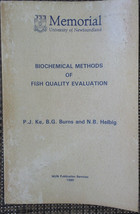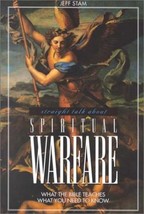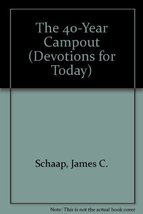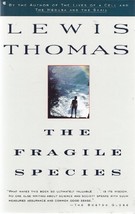Biochemical Methods of Fish Quality and 47 similar items
Biochemical Methods of Fish Quality Evaluations
$2.96
View full item details »
Shipping options
Return policy
Refunds available: See booth/item description for details
Purchase protection
Payment options
PayPal accepted
PayPal Credit accepted
Venmo accepted
PayPal, MasterCard, Visa, Discover, and American Express accepted
Maestro accepted
Amazon Pay accepted
Nuvei accepted
View full item details »
Shipping options
Return policy
Refunds available: See booth/item description for details
Purchase protection
Payment options
PayPal accepted
PayPal Credit accepted
Venmo accepted
PayPal, MasterCard, Visa, Discover, and American Express accepted
Maestro accepted
Amazon Pay accepted
Nuvei accepted
Item traits
| Category: | |
|---|---|
| Quantity Available: |
Only one in stock, order soon |
| Condition: |
Good |
| Language: |
English |
| Publication Year: |
1990 |
| Product Type: |
Textbook |
| Subject: |
Science & Tech |
| Country of Manufacture: |
Canada |
Listing details
| Shipping discount: |
Shipping weights of all items added together for savings. |
|---|---|
| Posted for sale: |
More than a week ago |
| Item number: |
379751948 |
Item description
Biochemical Methods of Fish Quality Evaluations
by: P.J. Ke, B.G. Burns and N.B Helbig, 1990, paperback
Condition: Cover and page stock shows yellowing. Otherwise the book is in very good condition.
See pictures for Table of Contents.
Publisher: MUN Publication Services, Memorial university of Newfoundland, St. John's, Newfoundland, 1990
Authors from: Biochemistry Department, Memorial University of Newfoundland and also Halifax Laboratories, Department of Fisheries and Oceans, Government of Canada, Halifax,, Nova Scotia Canada.
Pages: 198
Dimensions: 9 x 6 x 0.5", 13 ounces
This book is compilation of methods used to evaluate seafood developed and used by the Department of Fisheries and Oceans Canada.
Scientific quality assessment methods for fish and aquatic products have been reviewed and selected from the documents of the Department of Fisheries Oceans (DFO) Halifax Laboratory. The work of re-writing and original manual preparation were carried out by Mr.Burns of DFO as well as Mr . A. Woyewoda and Ms. S. Shaw of the Canadian Institute of Fisheries Technology, TUNS . Recommended Methods for Assessment of Fish Quality, published in 1986 as Canadian Technical Report of Fisheries and Aquatic Products No. 1448 , was recommended to more than 15 nations by the International Symposium of Fish Quality Determination in Anchorage, Alaska in November, 1989 . Since then, some parts of this report have been translated into French, Portuguese, Japanese and Chinese for various research stations and for industry development . In the past two years, this report has been also used as a textbook for Marine Food Science and Technology at Memorial University of Newfoundland (MUN). With various comments and suggestions from other groups, a revised manuscript of this report with some additional methods has been completed and used for various routine operation as well as technology - transfer for DFO and MUN .
Flavour and texture changes occur readily in fish and aquatic products for a variety of reasons. In fresh (iced) storage, biochemical and bacterial action produce specific measurable changes; in frozen storage, physical and enzymatic processes decrease quality. Standard procedures are necessary to obtain accurate measurements of degree of freshness comparable among different testing facilities . This collection of twenty-five laboratory methods is an attempt to compile such standard techniques and procedures for laboratory grading of fish and aquatic products. Drawn from current literature and experience and tested by the Department of Fisheries and Oceans and the Canadian Institute of Fisheries Technology, the procedures have been divided into sections of proximate composition, quality
indices of refrigerated or fresh storage, quality indices of frozen storage and physical attributes. Each method includes an introductory section followed by application, principle of the method, precautions and notes, sample preparation, equipment, reagents, detailed procedures, calculations , typical examples and references where additional information may be obtained . The methods utilize long-standing procedures which may be carried out in moderately equipped laboratories providing a guide for both technical staff and new personnel in research as well as routine work .
|
Why are we showing these items?
Search Results
Category "School Textbooks & Study Guides"
|

-
Refine your browsing experience
We can show you more items that are exactly like the original item, or we can show you items that are similar in spirit. By default we show you a mix.
This item has been added to your cart
 Biochemical Methods of Fish Quality Evaluations added to cart.
Only one available in stock
Biochemical Methods of Fish Quality Evaluations added to cart.
Only one available in stock
View Cart or continue shopping.
 Please wait while we finish adding this item to your cart.
Please wait while we finish adding this item to your cart.
Get an item reminder
We'll email you a link to your item now and follow up with a single reminder (if you'd like one). That's it! No spam, no hassle.
Already have an account?
Log in and add this item to your wish list.








![Fair Weather [Paperback] davidson, margaret - $0.89 Fair Weather [Paperback] davidson, margaret - $0.89](https://images-bucket.bonanzastatic.com/afu/images/1802/8259/77/51p5zffnp2l._sl1500__thumb200.jpg)

![Getting Your Baby to Sleep- Made Easy 2 CD set [Audio CD] by Terry Woodford - $1.72 Getting Your Baby to Sleep- Made Easy 2 CD set [Audio CD] by Terry Woodford - $1.72](https://images-bucket.bonanzastatic.com/afu/images/2513/6674/96/51k46v-oxhl._sl1500__thumb200.jpg)
![The Cabin Faced West [Paperback] [Jan 01, 1963] Fritz, Jean - $1.49 The Cabin Faced West [Paperback] [Jan 01, 1963] Fritz, Jean - $1.49](https://images-bucket.bonanzastatic.com/afu/images/6c9b/4dcb/aeea_6375366632/41jfpqrqawl._sl1500__thumb200.jpg)
![A Companion Guide to the Jesus Creed [Paperback] Mcknight, Scot - $1.27 A Companion Guide to the Jesus Creed [Paperback] Mcknight, Scot - $1.27](https://images-bucket.bonanzastatic.com/afu/images/87be/eaba/758d_9187843249/51fdmomheal._sl1500__thumb200.jpg)



![Shame and Grace: Healing the Shame We Don't Deserve [Paperback] Smedes, ... - $1.68 Shame and Grace: Healing the Shame We Don't Deserve [Paperback] Smedes, ... - $1.68](https://images-bucket.bonanzastatic.com/afu/images/7c47/cc23/3724_9202812361/41ozynnjhal._sl1500__thumb200.jpg)









![The Greatest Story Ever Told [Hardcover] Oursler, Fulton - $1.68 The Greatest Story Ever Told [Hardcover] Oursler, Fulton - $1.68](https://images-bucket.bonanzastatic.com/afu/images/3d46/932c/7a17_12405140569/51i17d46tol_thumb200.jpg)


![Believers Secret of the Masters Indwelling [Paperback] Murray, Andrew - $1.49 Believers Secret of the Masters Indwelling [Paperback] Murray, Andrew - $1.49](https://assets.bonanza.com/images/no-image155.jpg)




